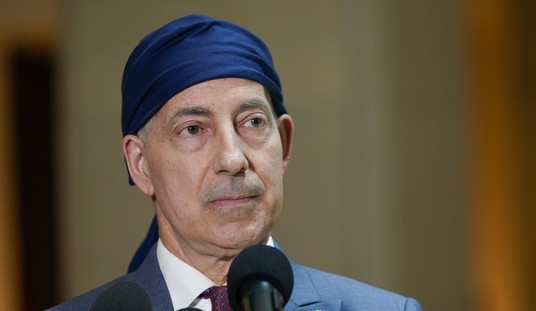First the good news:
The “broken windows” theory of crime prevention continues to pay dividends. In sharp contradistinction to the horrors of Detroit we watched last week, Michael C. Moynihan of Reason magazine writes, “New York looks set to again break its own record for lowest number of homicides since the city started (accurately) recording them back in 1963″:
The New York Times has details:
The story line of murder in New York is one that has been undergoing constant revision since 1963, when the Police Department began tracking homicides in a way that officials now deem reliable. (Before then, homicides were not counted until they were solved.) There have been rises — the number peaked at 2,245 in 1990 — and subsequent falls. But there have never been as few homicides as this year.
The city is on track, for the second time in three years, to have the fewest homicides in a 12-month period since the current record keeping system began. As of Sunday, there had been 461; the record low was in 2007, when there were 496 for the entire year.
The toll has gone down despite predictions that it would rise in a bad economy — a notion rejected by the city’s police commissioner, Raymond W. Kelly. But challenges persist: With the city facing a $4.1 billion budget deficit, the police force — which has been reduced by 6,000 officers since 2001 — may have to shrink further.
And as a result, Bushwick and Bed-Stuy are overflowing with hipsters on fixed-gear bikes, wearing ironic little mustaches, bitching and moaning about the horrid gentrification of Brooklyn, the so-called Disneyfication of Times Square, and how New York used to be so cool, so authentic when you could see Television at Max’s Kansas City for fifty cents and get stabbed in the neck for wandering into Crown Heights dressed like Elvis Costello. Yeah, those were the days.
And some New York liberals actually still think that it was, as Daniel Henninger wrote almost five years ago:
This past Sunday a New York Times feature in its City section asked famous New Yorkers to identify New York’s golden age. At least four identified the 1970s as the golden age. This is worth notice because in the 1970s banks said New York had spun its credit rating into dross and refused to lend more money to a city whose accumulated deficit reached $8 billion. Today its budget office reports that starting in FY2006, per-annum deficits for three years will be $3.7 billion, $4.5 billion and $3.7 billion. There is a mayoral election this November when we’ll get the opinion of all New Yorkers on the city’s current alchemists. But perhaps we should regard the famous Times’ commentators yearning for the 1970s as canaries in the gold-plated mine shaft.
The actor John Leguizamo: New York in the ’70s “was funky and gritty and showed the world how a metropolis could be dark and apocalyptic and yet fecund.” Fran Lebowitz, a contributing editor for Vanity Fair: The city “was a wreck; it was going bankrupt. And it was pretty lawless; everything was illegal, but no laws were enforced. It was a city for city-dwellers, not tourists, the way it is now.” Laurie Anderson, a well-known New York artist and performer, admits the ’70s were considered “the dark ages” but “there was great music and everyone was broke.”
* * *
Peter Hall, in his magisterial study of history’s great urban centers, “Cities in Civilization,” remarks offhandedly that “not for nothing did New York develop so rapidly after the first subways . . . brought their trains into the center of Manhattan.” The subways, of course, aren’t for the tourists but for unwealthy city-dwellers. Starting in 1970, fires, collisions and derailments routinely wrecked New York’s subways, injuring and even killing passengers. In August 1973, a chunk of concrete fell from the roof of the IRT Steinway tunnel and killed a passenger. A 1975 fire trapped 12,000 evening rush-hour passengers. But the cars were colorful. They were covered with graffiti, celebrated by Norman Mailer in a famously provocative paean to the graffiti painters.
The ’70s golden-agers in the Times story don’t deny what was going on then–but they kind of miss it. The photographer Mary Ellen Mark remembers “it was a time of costume and excitement, a time of youth and great energy.” Caleb Carr, the novelist of old-time New York, thinks the city has been “sterilized by the Giuliani years.” He says that “like a troublesome child taking Ritalin, New York may be more manageable now, but it has also sacrificed its personality.”
These comments raise the question of just what liberalism believes makes a city great or even golden, rather than just . . . interesting.
Of course, despite dramatic improvements in crime prevention in some metropolitan areas, the themes that drove Pat Moynihan’s 1993 “Defining Deviancy Down” essay are still very much on display in America:
A woman and her boyfriend beat her two-month old baby to death on Christmas Eve in Detroit, and the Wayne County Prosecutor suggests parenting classes might help stem the tide of such abuse. While we lose the traditions and practices of civility and self-restraint, while we laugh at the Church as anything more than a sentimental attachment, while we imagine that all the institutions that separated Western civilization from brutal, dirt-grubbing subsistence are capable of being refit to our wants, we maintain, throughout this insanity, an undying faith in the classroom to set all things to rights. Monsters are monsters, it seems, for want of enough lectures.
Incidentally, as Charles Krauthammer noted shortly after Moynihan’s essay, deviancy flows in both directions.









Join the conversation as a VIP Member